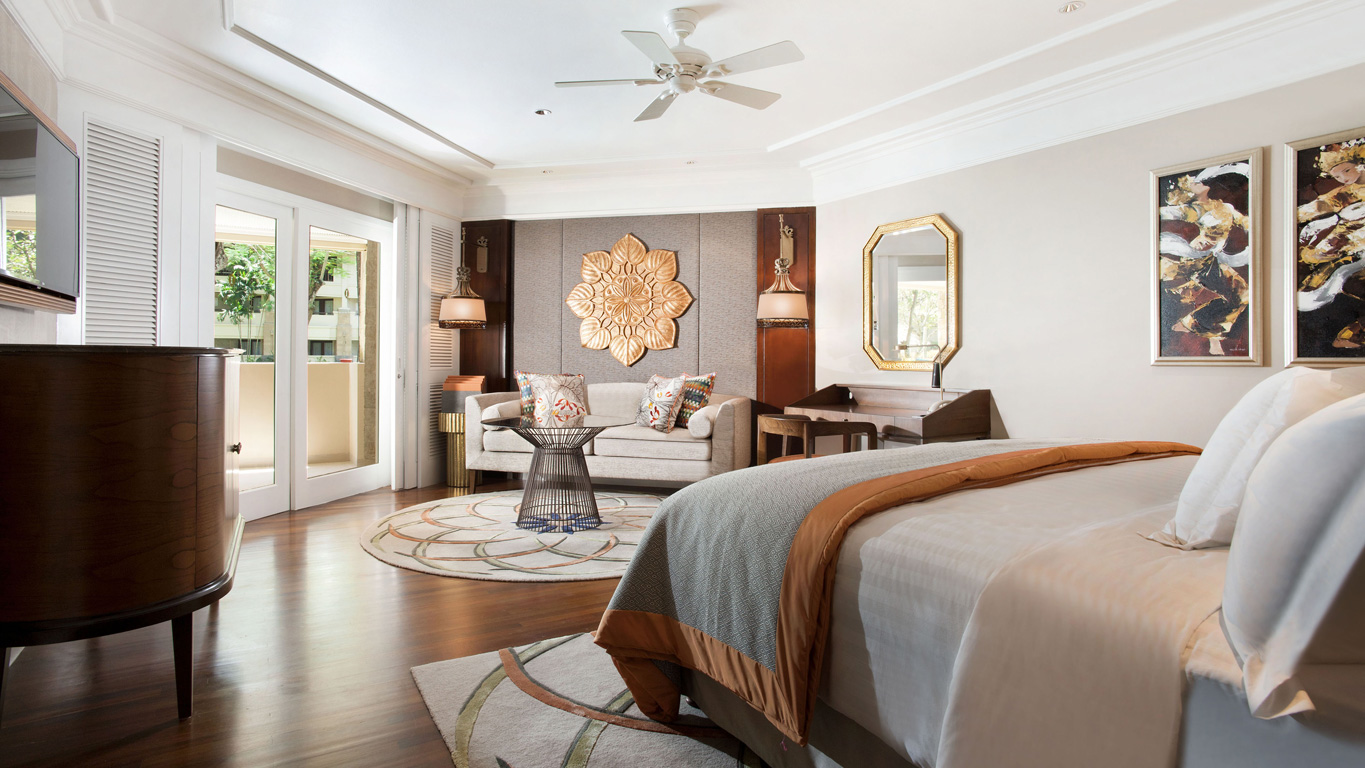InterContinental Bali Resort is known for its excellence in showcasing the best of Bali, with the essential components of Balinese Hindu philosophy, imagery and symbolism prevalently embodied throughout its design.
The Resort adheres to the principle of tri hita karana epitomizing the balance and harmony between the three sources of life: humans, nature and God. The resort’s architecture also honors the sacred axis between the holy mountain and the sea.
The resort now takes this rootedness in tradition further, with a comprehensive guestroom redesign program, which sets new standards for luxury accommodations in Bali and introduces world-class room technology.
“As one of the iconic resort properties for the InterContinental Hotels Group (IHG), InterContinental Bali, the design of the new rooms has been conceived to bring the soul of Bali to life with features such as hand-painted batik prints and intricate wood carvings, coupled with personalized technologies that will set new standards in Bali,” IHG’s general manager for Bali Resorts, Michel Chertouh, said.
Guest Room Design
Guests will soon discover the visually beautiful and also physically comfortable features of the resort’s brand new guest room design.
The interiors have been designed by the Singapore-based James Park Associates, a renowned design consultancy that has an extensive knowledge of the architectural traditions of Bali and Indonesia and specializes in creating exceptional guestrooms that pay homage to the cultural roots of the location. The rooms’ most unique features are the full-wall mural paintings inspired by designs found on Balinese textiles.
The beds’ backdrops feature carved wooden headboard panels with geometric lattice patterns typical of those seen on traditional Balinese doorways. An impressive circular carved objet d’art features prominently in each room, mounted on the fabric-paneled accent wall of each lounge area. The pendant lamps are a signature of the new InterContinental Bali guestrooms and suites, inspired by the elaborate terracotta crown finials of traditional Balinese thatched roofs. Each lamp also features a cast brass decoration depicting dragons and Garuda – the winged messenger and carrier of the supreme god, Vishnu.
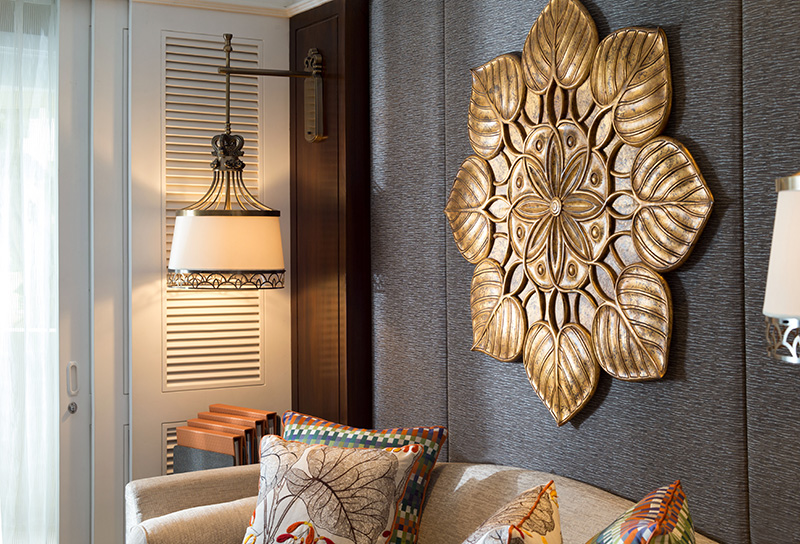
The woven rattan material, ubiquitous to the tropics, is treated with an antique patina and used prominently in the wall paneling of the dressing rooms. The crafted furniture has been carefully designed to complement the hotel’s classic, vernacular architecture, while also conveying a timeless, tropical aesthetic.
Indonesian wood from sustainable sources is widely used and is combined with eye-catching accents such as tropical hardwood veneers, lacquered tobacco leaf and faux-shagreen – resembling the textured skin of a stingray, while the hand-tufted wool rugs are characterized by local patterns. The rooms are completed with thoughtfully curated thematic paintings depicting Balinese Legong dancers, the dynamic brush strokes conveying the fluid motion and stunning costumes of Bali’s most exquisite dance.
The extensive use of Indonesian marble authentically reflects the context of the bathrooms, while exotic imported stone brings a rich opulence to vanity counters and bath surrounds. Contemporary yet timeless fittings and fixtures, such as those from Hansgrohe’s Citterio E range, complete the composition. All of the rooms retain their original teakwood flooring, carefully restored to bring new life to this rich and valuable material.
Technology
New technology and state-of-the-art facilities are being incorporated to anticipate every guest need and to meet the resort’s ongoing environmental commitment to improve its carbon footprint and protect natural resources through the reduction of energy consumption and water usage.
To enable guests to fully relax in their rooms and to enjoy a true home-away-from-home experience, each room will be equipped with a High Definition Smart IPTV system, with a 43-inch wall-mounted screen, offering access to thousands of high quality digital TV and radio channels from around the world, as well as movies and TV series on demand, internet radio, YouTube channels and live streaming via a high-speed internet connection. Guests can even watch more than one channel at a time via their own Android or iPad (and iPhone) devices. Other options via the IPTV system include a messaging interface for In-Room dining and Concierge services and facilities such as a world clock, wake-up calls, interactive maps and interactive flight information.
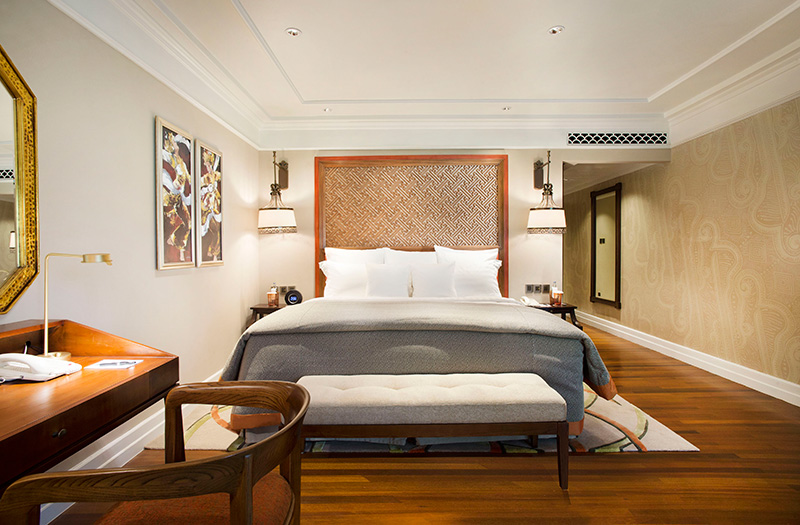
In line with the Resort’s “Green Engage” sustainable environmental program, each room is being fitted with a revolutionary energy management system featuring occupancy sensors that will reduce negative impact and energy consumption by controlling lighting and air-conditioning thermostats when no one is present. Lights will come on automatically when the room is reoccupied and guests can change the settings for their own comfort. Halogen ceiling lights are being replaced with energy-saving LED downlights, while silent mini-bar fridges are being installed utilizing an energy efficient compressor cooling unit to reduce power consumption.
The impact of overuse of groundwater by tourism – with a falling water table – is being felt all over Bali. Therefore, the renovated bathrooms have been fitted with low-flow shower heads that reduce the water flow to 6.3 liters per minute, low-flow taps, and high efficiency dual-flush toilets, reducing water usage by up to eight liters per flush by using only three to 4.5 liters at any one time. Bathrooms will be completed with an attractive range of accessories designed to harmonize with the new décor, synonymous with the style of the resort. Finally, for the relaxing convenience of the guests, intelligent electrical control devices will be installed. These will include a master switch beside the bed, as well as bed-top and desktop level universal power points and USB charging ports.
InterContinental Bali Resort is a five-star luxury resort, which rests alongside the magnificent golden-sand beach of Jimbaran Bay, complete with five swimming pools, award-winning restaurants and an internationally acclaimed spa.
The first of the re-designed Singaraja rooms is available to book.
Singaraja Room: A touch of batik
The interiors of the Singaraja rooms at the InterContinental Bali Resort are currently undergoing a comprehensive redesign program with features such as hand-painted wall murals inspired by motifs found on Balinese textiles and traditional batik.
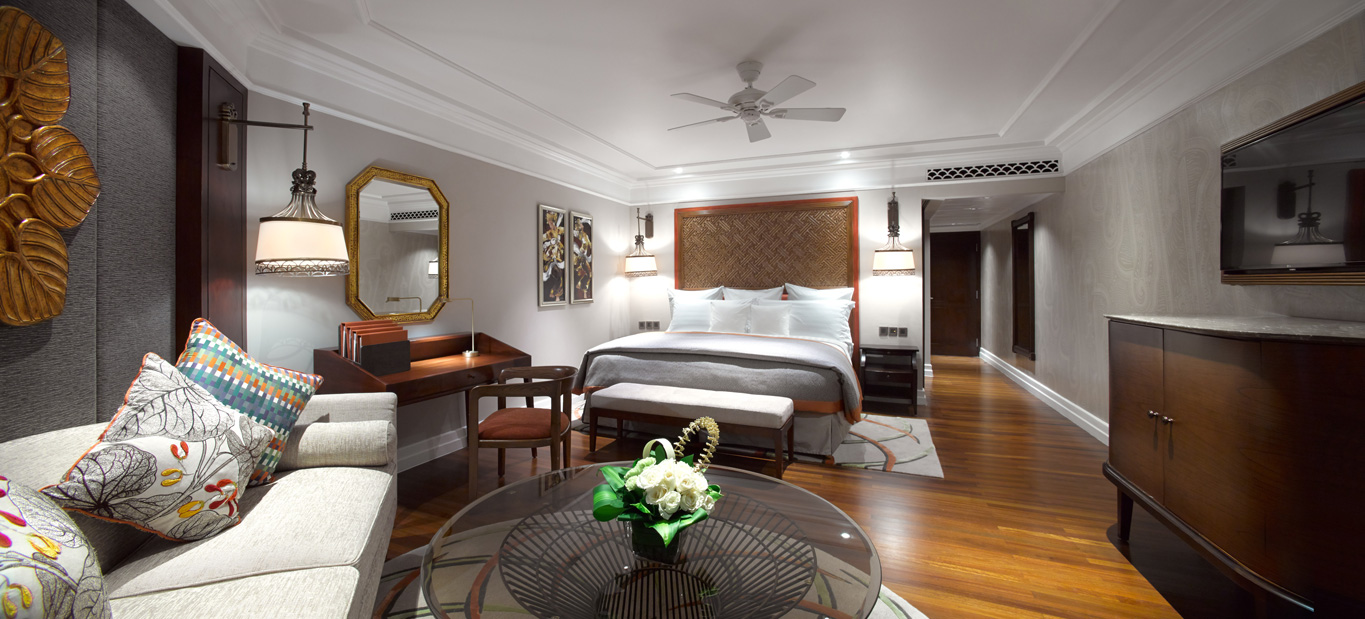
Batik – the art of decorating cloth using wax and dye – is an Indonesian art form and the inspiration for the full-wall murals in the resort’s redecorated guestrooms, each of which is being hand painted by a Balinese artisan. There is nowhere in the world where batik art has been developed to such high standards as in Bali’s neighboring island of Java and it is fitting therefore that some of the muted wall patterns were influenced by the parang, a Javanese batik design that was once used exclusively by the royal courts of Central Java.
This famous motif comprises slanting rows of thick knife-like segments running in parallel diagonal bands, some of which contain another design element, a line of lozenge-shaped motifs called mlinjon. Parang is traditionally dyed soga brown, a color that ranges from pale yellow to dark chocolate, using a pigment that comes from the bark of the soga or yellow flame tree, a native of Southeast Asia.
In fact, one of the reasons why Java became famous for batik is because all of the raw materials for the process have always been readily available – cotton and beeswax and the many plants from which the natural dyes are made. There are many variations of the basic striped pattern of the parang, with more than 40 parang designs recorded. It also appears in media other than batik, including in woodcarvings and as ornamentation on gamelan musical instruments.
The hand-painted wall murals in the resort’s Singaraja rooms feature a flower motif, which was found on the border of a perada or prada textile produced in North Bali’s Singaraja region. This textile technique originally involved the application of silver or gold leaf in an organic, floral pattern over a batik base; nowadays the more affordable option of bronze dust is often used instead. Because the perada textile was initially brought to Java by Indian traders and then later brought to Bali, stylised Hindu motifs – such as sacred lotus blossoms, as well as temple relief designs and ancient woodwork patterns – were used to decorate the borders.
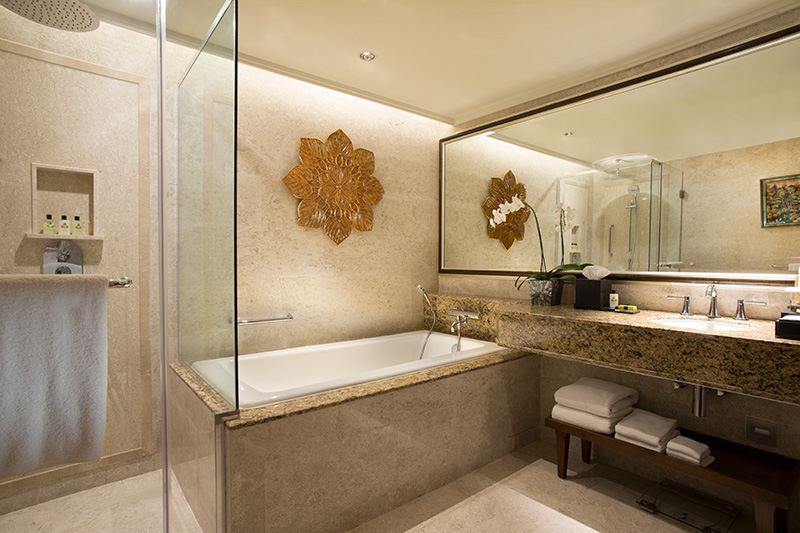
InterContinental Bali Resort is proud to showcase these historic patterns on the walls of the upgraded guestrooms.
Book and stay in our newly refurbished Singaraja Room; capture and share your experience with us. We will draw one lucky winner and credit 1 million IHG Rewards Points to your account. These 1 million bonus points are worth of 22 nights at the InterContinental Bali Resort or 16 nights at the famous InterContinental New York Times Square and also at more than 4,600 IHG hotels and resorts worldwide. For more information, please visit bali.intercontinental.com.
This article brought to you by



